|
||||||||||
|
|
||||||||||
|
||||||||||
|
|
||||||||||

Igor Sikorsky flying his VS-300
Even though Sikorsky's was not the first helicopter, his was the first truly successful design incorporating all the components that have become standard on helicopters today. Igor Sikorsky's principal contribution to helicopter design was the use of a tail rotor to counteract the torque produced by the main rotor. It was this innovation that finally solved the last major hurdle in helicopter control and made the craft a truly practical flying machine. The VS-300 made its first flights in 1939 while tethered to the ground for safety, but the first free flight occurred on 13 May 1940 (learn more).

Heinkel He 178
One of the most pivotal advancements in aviation was the development of the turbojet engine, credited to Sir Frank Whittle of Britain and Hans von Ohain of Germany who both invented the technology independently. The first engine to take to the air was von Ohain's aboard the He 178 designed and built by Ernst Heinkel. Whittle's design quickly followed suit when his engine was flown aboard the Gloster E.28/39 on 15 May 1941. Thanks to these pioneering inventors, the jet age was born and a new era of air travel at unparalleled speeds was about to commence (learn more).
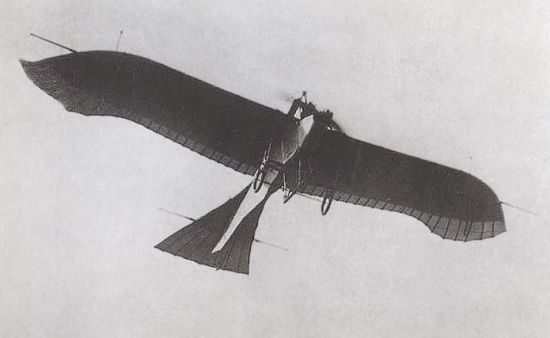
A Taube monoplane as it might have appeared to the Turks
Although a rather obscure reference, it is difficult to overestimate the impact the aircraft has had on warfare. This somewhat infamous milestone occurred during the Italian-Turkish War in North Africa when the airplane was first used in combat. Italian pilot Lieutenant Giulio Gavotti earned the honor when he threw four small grenades out of his plane by hand to terrorize Turkish troops below. This single act constituted the first aerial bombing in history (learn more).
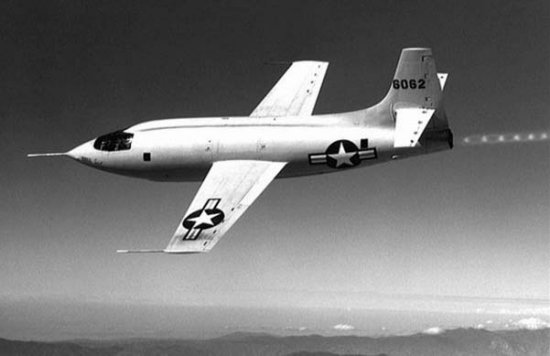
X-1
Up until the moment it first occurred, not only the majority of the public but even many mainstream scientists believed that the "sound barrier" could never be broken. Chuck Yeager's historic flight in the X-1 proved them wrong and touched off one of the most exciting periods in aviation history as a series of high-speed research aircraft pushed ever faster (learn more).
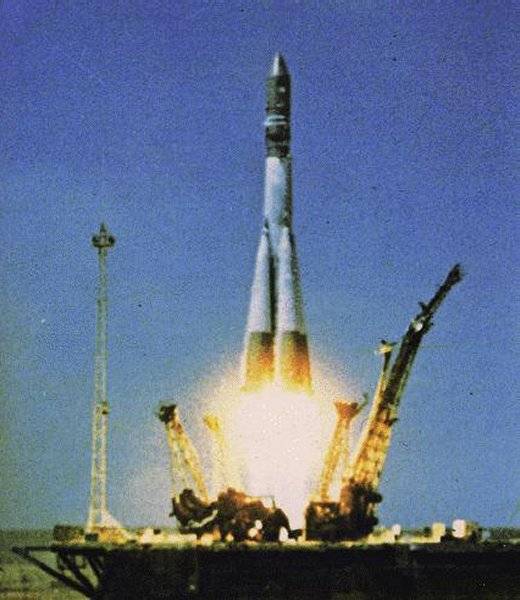
Launch of Vostok 1 carrying Yuri Gagarin
A new chapter in human history began when Soviet Cosmonaut Yuri Gagarin became the first man to orbit the Earth. It is rather amazing to think that mankind evolved from rickety contraptions barely able to pull themselves a few feet off the ground to mighty rockets capable of reaching orbit in as little as two generations.
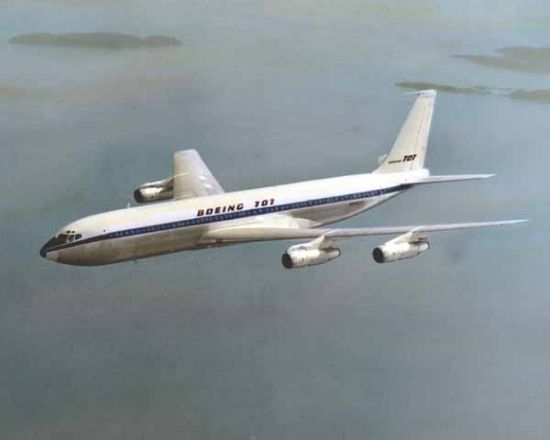
Boeing 707
We all felt that some event in commercial aviation deserved to make the list since few technological innovations have had such a profound impact on the way we live. Parts of the world that were once inaccessible could suddenly be visited within a matter of hours, and the world became a much closer community. However, it was difficult to select a single event that best represented the revolutionary influence commercial air travel has had on the world. What we eventually agreed upon was the introduction of the Boeing 707, the first successful jet-powered airliner that ushered in a new era of commercial flight. This aircraft and its contemporaries were the first to truly bring air travel to the masses, offering speed and comfort unrivaled by earlier planes. The 707 was also the first aircraft to introduce economy seating that made air travel affordable and allowed the plane to rapidly displace the train and passenger ship as the preferred method of long-distance travel (learn more).

Sputnik
Perhaps no event in aerospace history had as much of a psychological impact on the two superpowers and the course of the Cold War as the first successful artificial satellite, launched by the Soviet Union in 1957. Not only was humanity brought into the space age, but the space race was born as both the Soviets and Americans based their international prestige on setting new records in space exploration.
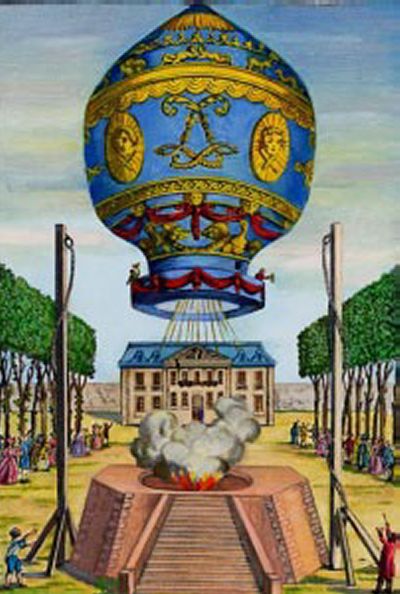
Lift off of the Montgolfier hot air balloon
The milestone may receive little attention today, but the first successful human flight in history occurred aboard a hot air balloon over Paris, France, in 1783. The new innovation was pioneered by the Montgolfier brothers, Joseph and Etienne, who were inspired by the "lifting power" of hot air rising from a fireplace. Piloting the first manned flight was science teacher Pilātre de Rozier, who later perished while attempting to cross the English Channel in a balloon. Also aboard was a French artillery officer, the Marquis d'Alandes. Together, these two became humanity's first air travelers when they flew a distance of 5 miles over Paris.
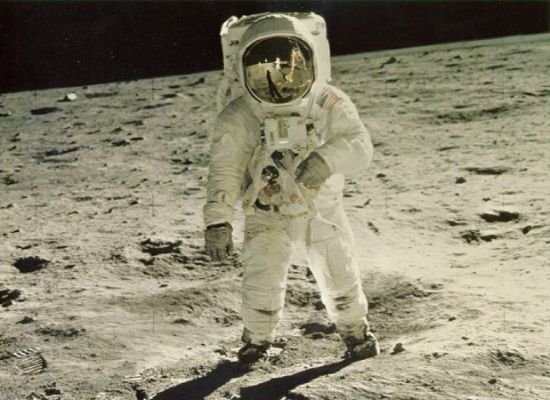
Buzz Aldrin on the Moon
One of the truly remarkable moments in human history was the first time man set foot on another world. Neil Armstrong's small step was not only the ultimate achievement of the space race, but also a giant leap in human history.

The Wright Flyer becomes airborne under the control of Orville Wright
What makes Wilbur and Orville Wright's achievement so significant is not only that it was the first time in history that a manned, powered aircraft completed a fully-controlled, sustained flight, but it proved to naysayers around the world that heavier-than-air flight was practical. After the Wrights proved their critics wrong, the field of aeronautical engineering was born. Governments, universities, and inventors soon began dedicating vast resources to understanding the science of flight and methods of building improved flying machines. In essence, every event and discovery in aviation either led up to or followed from the flight of the Wright Flyer, and it changed the way we live forever.
A number of other notable milestones were also discussed while compiling our Top 10 list. Even though these did not make the final cut, they are still worth including as honorable mentions.
The first nonstop flight across the Atlantic was performed by Englishman John Alcock and Arthur Brown in 1919, but Lindbergh was the first to make the crossing solo. His achievement earned him the Orteig Prize and made him an instant international celebrity. Upon his return to the US, Lindbergh received the largest ticker-tape parade in history. This one flight was instrumental in boosting the public's confidence in air travel and helped the fledgling airline industry attract new passengers (learn more).
Launched in 1972, the aptly named Pioneer was the first spacecraft to visit the outer solar system. After completing its study of Jupiter, Pioneer 10's trajectory carried it outside of the solar system and into interstellar space, the first craft to do so. Pioneer 10 continued transmitting data back to Earth until 23 January 2003 when its power source became too weak. At that time, the space probe was over 7.6 billion miles from Earth. In about 2 million years, Pioneer 10 should reach the closest star on its trajectory, the red giant Aldebaran, which lies some 71 light years away (learn more).
George Cayley was truly one of the most far-sighted pioneers in the early days of aviation, and his contributions to the field are summarized well by two remarkable creations. The first of these was the flight of his 1804 glider, notable because it was the first design in history that included the principal features of the modern fixed-wing aircraft configuration (learn more). Towards the end of his life, Cayley again returned to his aviation pursuits and developed the first manned glider in history. This historic craft flew in 1853 with Cayley's coachman aboard. Seemingly uninterested in his pioneering feat, the shaken and exasperated coachman is quoted as saying, "Please, Sir George, I wish to give notice. I was hired to drive, and not to fly."
Though flights around the world had been attempted for decades, no plane had ever been able to do so without refueling along the way. Aviation pioneer Burt Rutan sought to challenge that with his remarkable Voyager, designed using advanced aerodynamic concepts as well as lightweight construction materials and incorporating highly efficient propulsion technologies. With Dick Rutan and Jeana Yeager at the controls, the Voyager set out on a 9-day odyssey covering nearly 25,000 miles and became the first aircraft to accomplish the feat (learn more).
We often take advances like cell phones, the internet, instant media coverage, and GPS devices for granted, but many of these technologies could not exist without the vast array of communications satellites that circle the Earth. Pioneering this technology was NASA's Echo 1, launched in 1960 and quickly followed by a myriad of increasingly more sophisticated satellites.
It is rather amazing to realize that commercial air travel can trace its roots as far back as 1914, little more than a decade after the Wright brothers first flew. Nevertheless, the milestone belongs to the Benoist Company that flew the first regularly scheduled passenger flight between St. Petersburg and Tampa, Florida, using a Benoist flying boat. Piloting the inaugural flight was Capt. Tony Jannus, a well known airman of the day. Former mayor of St. Petersurg Abram C. Pheil won the chance to become the first airline passenger through an auction.
Perhaps no recent aviation milestone was more difficult to achieve than that of the first circumnavigation of the globe in a balloon. Numerous would-be record setters made the attempt, and it was common to hear of failures every few months. The feat was finally accomplished, however, by Betrand Piccard of Switzerland and Brian Jones of Great Britain following a grueling 19-day flight covering over 26,000 miles. Competitor Steve Fossett quickly followed suit when he successfully completed the first solo flight around the world on 2 July 2002, his sixth attempt to do so.
A controversial milestone to be sure, but the fateful flight of the B-29 over Hiroshima, Japan, has certainly cast a long shadow through history. This flight marked a major turning point in human history since a single aircraft now had the ability to end a war.
Paul Cornu was first to realize the long dream of climbing vertically into the air when his twin-rotor design rose off the ground unrestrained in 1907. This success marked the first in a long series of critical advancements that would turn the helicopter from a dream into reality (learn more).
Bridging the gap between Cayley's manned glider and the Wright's historic flight was renowned American scientist Samuel Langley. Langley was convinced that technology was available to construct an engine light enough and powerful enough to make heavier-than-air flight possible. He put his theories into practice by developing a series of unmanned, subscale, powered aircraft using steam engines of his own design. His most notable success came in 1896 when, for the first time in history, a winged-craft flew a sustained flight under the power of its own engine (learn more).
|
|
|||||
| Moon landing |
|
14% | |||
| First jet engine |
|
8% | |||
| Wright brothers |
|
47% | |||
| First aerial combat |
|
3% | |||
| First man in space |
|
5% | |||
| Sound barrier |
|
8% | |||
| Lindbergh flight |
|
4% | |||
| Sputnik |
|
4% | |||
| First airline flight |
|
4% | |||
| Other |
|
2% | |||
| Undecided |
|
1% | |||
| Total votes: 250 | |||||
In closing, we thought it would be interesting to provide the above results of a poll conducted by
Aerospaceweb.org in the two weeks prior to the posting of our
Top 10 list.
- answer by Aerospaceweb.org Staff, 14 December 2003
Related Topics:
Read More Articles:


|
Aircraft | Design | Ask Us | Shop | Search |

|
|
| About Us | Contact Us | Copyright © 1997- | |||
|
|
|||